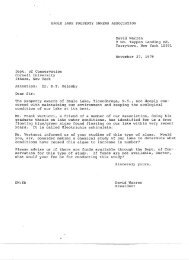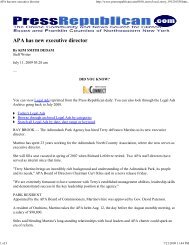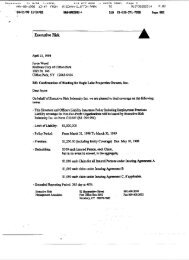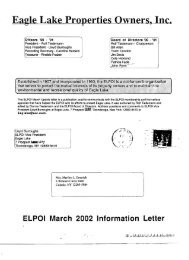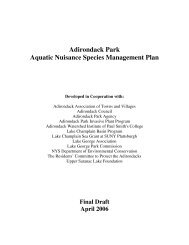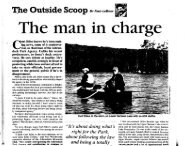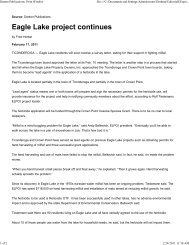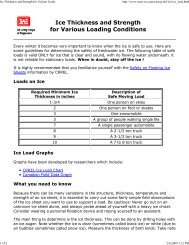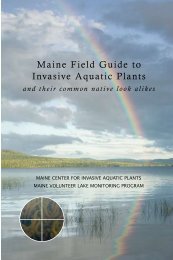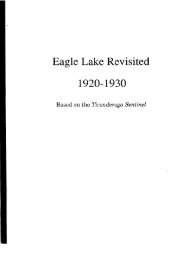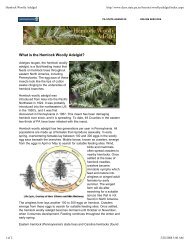SEIS - Eagle Lake Property Owner's Inc.
SEIS - Eagle Lake Property Owner's Inc.
SEIS - Eagle Lake Property Owner's Inc.
You also want an ePaper? Increase the reach of your titles
YUMPU automatically turns print PDFs into web optimized ePapers that Google loves.
The goal of a chemical control program for <strong>Eagle</strong> <strong>Lake</strong> would be to eradicate moderate to densestands of milfoil, or at least to reduce milfoil in that area to a level controllable by physicalmeans, with minimal hazard to anything but the milfoil. Given the non-selective nature of bothendothall and diquat and the water use restrictions attached to each, these herbicides are not wellsuited for use in <strong>Eagle</strong> <strong>Lake</strong>. Additionally, the inability of these chemicals to eliminate thewhole plant suggests that repeated treatments will be necessary to achieve any lasting control.2,4-D2,4-D (2,4-dichlorophenoxyacetic acid) is a systemic chemical which affects target plants byinhibiting critical metabolic pathways after uptake through roots, leaves or shoots. 2,4-D is theactive ingredient in a variety of commercial herbicide products and has been in use for over 30years despite claims of undesirable environmental side effects and potential human health effects.This is a systemic herbicide; it is absorbed by roots, leaves and shoots and disrupts cell divisionthroughout the plant. Vegetative propagules such as winter buds, if not connected to thecirculatory system of the plant at the time of treatment, are generally unaffected and can growinto new plants. It is therefore important to treat plants early in the season, after growth hasbecome active but before such propagules form. .2,4-D is sold in liquid or granular forms as sodium and potassium salts, as ammonia or aminesalts, and as an ester. Doses of 50 to 150 pounds per acre are usual for submersed weeds, mostoften of the dimethyl amine salt or the butoxyethanolester (BEE). This herbicide is particularlyeffective against Eurasian watermilfoil (granular BEE applied to roots early in the season) and asa foliage spray against water hyacinth. 2,4-D has a short persistence in the water but can bedetected in the mud for months.Experience with granular 2,4-D in the control of nuisance macrophytes has been generallypositive, with careful dosage management providing control of such non-native nuisance speciesas Eurasian watermilfoil with only sublethal damage to many native species (Miller and Trout,1985; Helsel et aI., 1996). Recovery of the native community from seed has also beensuccessful. 2,4-D has variable toxicity to fish, depending upon formulation and fish species. The2,4-D label does not permit use of this herbicide in water used for drinking or other domesticpurposes, or for irrigation or watering of livestock. Concentrations in treated water should notexceed 0.1 mglL.Use of 2,4-D to provide the desired level of control over milfoil without impact to other plantspecies is consistent with the goals of the milfoil control program at <strong>Eagle</strong> <strong>Lake</strong>, but labelrestrictions prevent its use in this system.Tric/opyrThe herbicide Garlon 3A, with triclopyr (tric1opyr triethylamine), as its active ingredient, iscurrently experimental for aquatic habitats. If successfully registered for aquatic use, it will bemarketed under the tradename Renovate. It is highly selective and effective against Eurasianmilfoil at a dose of 1-2.5 mg/I. Experimental treatments of aquatic environments (NetherlandD<strong>SEIS</strong> for <strong>Eagle</strong> <strong>Lake</strong> 44 ENSR



